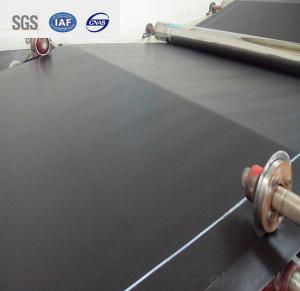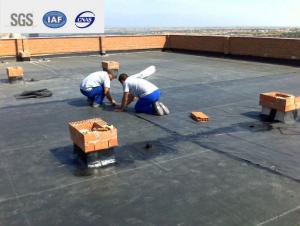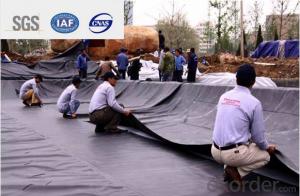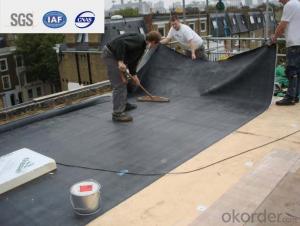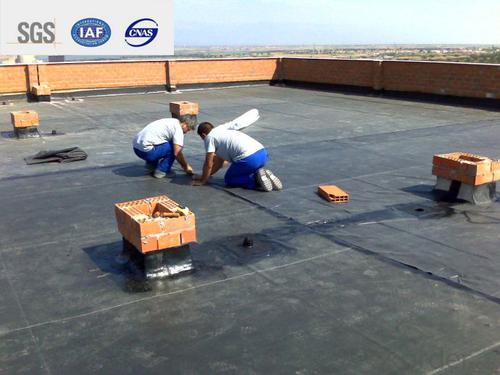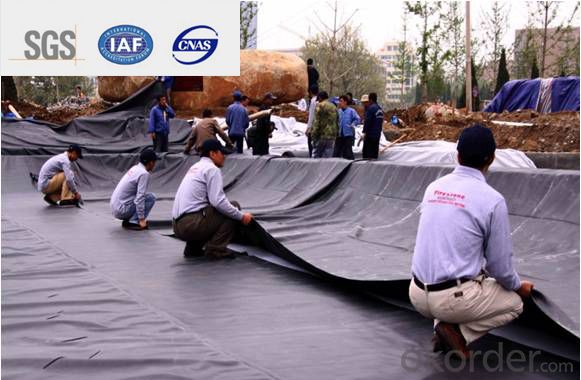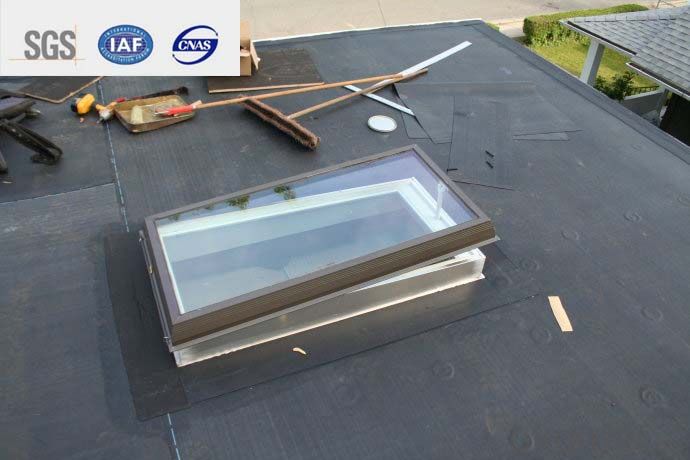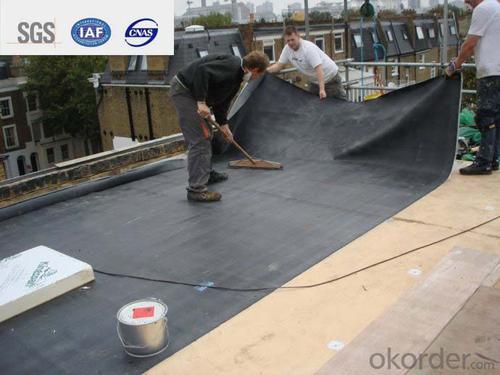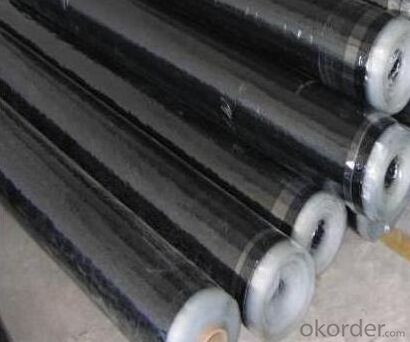EPDM Self-adhesive 22Waterproof Membrane for Rooftop
- Loading Port:
- Qingdao
- Payment Terms:
- TT OR LC
- Min Order Qty:
- 2000 m²
- Supply Capability:
- 800000 m²/month
OKorder Service Pledge
OKorder Financial Service
You Might Also Like
Description Of EPDM Self-adhesive Waterproof Membrane:
1. EPDM waterproof membrane is made from ternary ethylene-propylene rubber, which is for waterproofing of exposed and non-exposed applications.
2. EPDM waterproof membrane production adopts the world-advanced equipment of cold feeding extrusion and continuous vulcanization technology.
3. EPDM waterproof membrane is of high elasticity among high polymer waterproof materials and becomes a world-popular waterproofing material.
Main Features of EPDM Self-adhesive Waterproof Membrane:
1 High tear
2 High puncturing strength
3 Great temperature resistance.
4 High dimensional stability
Specifications of EPDM Self-adhesive Waterproof Membrane:
Material | EPDM Rubber |
Size | 1.2m (width)*20m (length) or customized, weldable type 2.05m or 4m width |
Thick | 1.2mm, 1.5mm, 2.0mm |
Type | Vulcanized & Weldable |
Pattern | Non-reinforced (homogeneous) |
Certificate | ISO9001/14001 |
Applications of EPDM Rubber Waterproof Membrane:
1.Roofs, Basement, Toilets
2. Industrial and civil building waterproofing
3. Geosynthetic liner for swimming pool, channels, irrigation system
4. Especially suitable for projects with high requirements in durability, anti-corrosion and deformation.
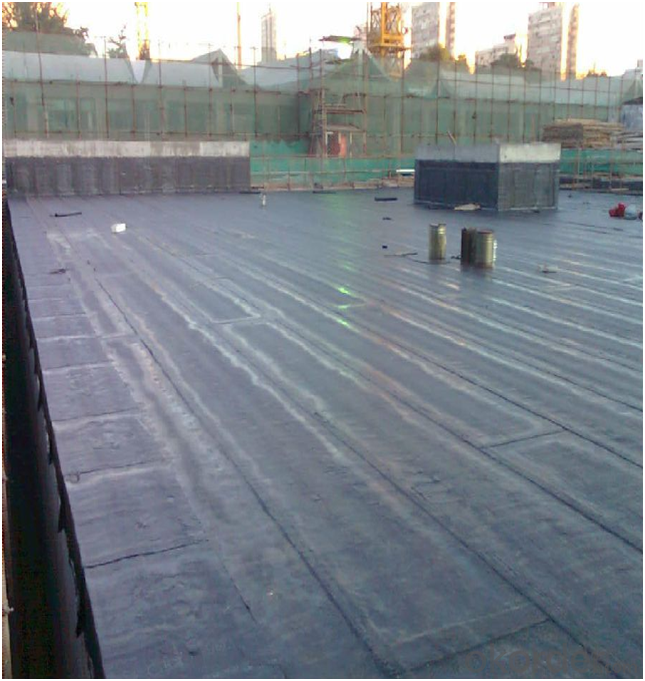


FAQ:
1. What are we supplying?
We are specialized in producing Colorful Asphalt Roof Shingle, SBS/APP modified bitumen waterproof membrane, Self adhesive bitumen waterproof membrane, PVC waterproofing membrane, EPDM rubber roofing membrane, Single Component Polyurethane Waterproof Coating, and Spray Polyurea Waterproof Coating.
2. How Many years experience do we have?
We have been exported to more than 20 countries in the past 15 years.
3. How long do we usually reply your request?
We always reply our customer within 24 hours.
- Q: Can waterproofing membranes be used on roofs with slopes?
- Yes, waterproofing membranes can be used on roofs with slopes. These membranes are designed to provide a protective barrier against water infiltration and are commonly used on roofs with varying degrees of slope to prevent leaks and water damage.
- Q: What is the preferred level of waterproofing?
- 3, roof 3 waterproof: Application: general building; Waterproof layer of reasonable use of life: 10 years; Waterproof layer selection of materials: should choose three asphalt four oil asphalt waterproofing membrane, polymer modified asphalt waterproofing membrane, synthetic polymer waterproofing membrane, metal sheet, polymer modified asphalt waterproof coating, synthetic polymer waterproof coating , Fine stone concrete, flat tile, felt tile and other materials;
- Q: Can a waterproofing membrane be used for tunnels or subway systems?
- Tunnels and subway systems frequently encounter water infiltration as a result of the soil conditions or groundwater levels in their vicinity. To counteract this issue, a waterproofing membrane is commonly employed. This membrane serves as a protective shield, effectively obstructing water from permeating into the tunnels or subway systems. Its installation is typically carried out on the outer surfaces of the tunnel walls and roof, establishing an impervious seal. By doing so, it aids in the prevention of corrosion, decay, and harm to the structural components of the tunnels, guaranteeing the durability and safety of these subterranean infrastructures.
- Q: Is a waterproofing membrane resistant to hydrocarbons or oil spills?
- Typically, a waterproofing membrane exhibits resistance against hydrocarbons and oil spills. Its primary purpose is to create a barrier that prevents water penetration and protects the underlying surfaces from moisture damage. These membranes are commonly made from materials such as modified bitumen, polyurethane, or PVC, all of which possess excellent chemical resistance, including towards hydrocarbons and oil. This resistance guarantees that the membrane remains intact and effective even when exposed to substances like oil spills or hydrocarbon-based liquids. However, it is crucial to note that the specific resistance may vary depending on the type and quality of the selected waterproofing membrane. Therefore, it is essential to choose a membrane that is specifically engineered to withstand the intended environment and potential chemical exposures.
- Q: Can waterproofing membranes be used on outdoor fountains?
- Yes, waterproofing membranes can be used on outdoor fountains. Waterproofing membranes are designed to create a barrier that prevents water from penetrating through surfaces, making them ideal for protecting outdoor fountains from water damage. These membranes are typically made of materials such as rubber, PVC, or bitumen, which are highly resistant to water and can effectively seal the fountain's structure. Applying a waterproofing membrane to an outdoor fountain can help prolong its lifespan, prevent leaks, and protect it from the elements.
- Q: Can a waterproofing membrane be used for a parking lot?
- Yes, a waterproofing membrane can be used for a parking lot. A waterproofing membrane is designed to provide a protective barrier against water infiltration and can be applied to various surfaces, including parking lots. It helps to prevent water damage, such as cracks and deterioration caused by freeze-thaw cycles, and can extend the lifespan of the parking lot. Additionally, a waterproofing membrane can also help to mitigate the risk of costly repairs by preventing water from seeping into the subbase and compromising its stability. Overall, using a waterproofing membrane for a parking lot can be a smart investment to enhance durability and longevity while minimizing maintenance needs.
- Q: Can a waterproofing membrane be covered or concealed by other finishes or materials?
- Indeed, other finishes or materials have the capability to cover or mask a waterproofing membrane. In fact, this practice is widely employed in construction projects. The primary purpose of a waterproofing membrane is to establish a barrier against water infiltration and safeguard the underlying structure. Prior to the application of other finishes or materials, it is typically installed on surfaces like roofs, foundations, or walls. Concealing the waterproofing membrane with other finishes or materials serves two key objectives. Firstly, it enhances the aesthetics of the structure. Whether it is a roof, bathroom, or basement, hiding the waterproofing membrane allows for the incorporation of more visually pleasing finishes such as tiles, paints, or decorative elements. Secondly, covering the waterproofing membrane provides an additional layer of protection. While the membrane itself is designed to be water-resistant, it may still be susceptible to damage from UV rays, foot traffic, or general wear and tear. By adding other finishes or materials on top, such as protective coatings, tiles, or concrete, the waterproofing membrane is shielded from potential harm, extending its lifespan and effectiveness. However, it is crucial to note that proper installation and compatibility between the waterproofing membrane and the covering materials are of utmost importance. The covering materials should not compromise the integrity of the membrane or create any weak points. Additionally, any penetrations or joints in the covering materials must be meticulously sealed to maintain the effectiveness of the waterproofing system. Therefore, while it is possible to cover or conceal a waterproofing membrane with other finishes or materials, it is essential to adhere to manufacturer guidelines and seek professional advice to ensure the overall integrity and performance of the waterproofing system.
- Q: Does a waterproofing membrane have any impact on the thermal performance of a structure?
- The thermal performance of a structure can be influenced by a waterproofing membrane. Usage of a waterproofing membrane is common in buildings to prevent water infiltration, which can harm the structure over time. By creating a barrier against moisture, the membrane helps maintain the building envelope's integrity and safeguards against potential leaks or water damage. Regarding thermal performance, a waterproofing membrane can enhance insulation by reducing heat transfer through the building envelope. By preventing moisture from entering the structure, the membrane also prevents condensation formation, which can lead to mold growth and further damage to building materials. Moreover, certain waterproofing membranes are designed with additional insulation properties, such as foam or reflective coatings, which further improve a structure's thermal performance. These membranes decrease thermal bridging and enhance energy efficiency by minimizing heat loss or gain through the building envelope. It should be noted that the impact of a waterproofing membrane on a structure's thermal performance can vary depending on the specific type of membrane, its installation, and the overall building design. Consulting a professional architect or engineer is advisable to determine the most suitable waterproofing solution that meets both water resistance and thermal performance requirements for a particular structure.
- Q: Can a waterproofing membrane be used in foundations?
- Yes, a waterproofing membrane can be used in foundations. Waterproofing membranes are commonly used in construction to prevent water penetration into the foundation walls and basement areas. These membranes are designed to create a barrier against moisture, helping to protect the foundation from water damage and potential leaks.
- Q: How do waterproofing membranes adhere to surfaces?
- Waterproofing membranes adhere to surfaces through the use of adhesive materials, such as modified bitumen or synthetic rubber compounds, which are applied to the surface and bond with it. The adhesive properties of these membranes allow them to create a tight and seamless seal, preventing water penetration and ensuring long-lasting waterproofing protection.
Send your message to us
EPDM Self-adhesive 22Waterproof Membrane for Rooftop
- Loading Port:
- Qingdao
- Payment Terms:
- TT OR LC
- Min Order Qty:
- 2000 m²
- Supply Capability:
- 800000 m²/month
OKorder Service Pledge
OKorder Financial Service
Similar products
Hot products
Hot Searches
Related keywords
